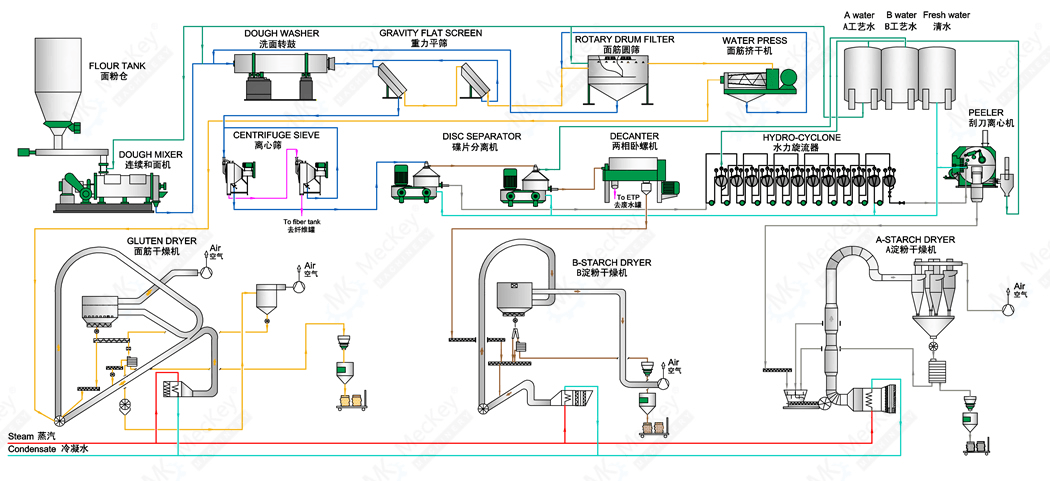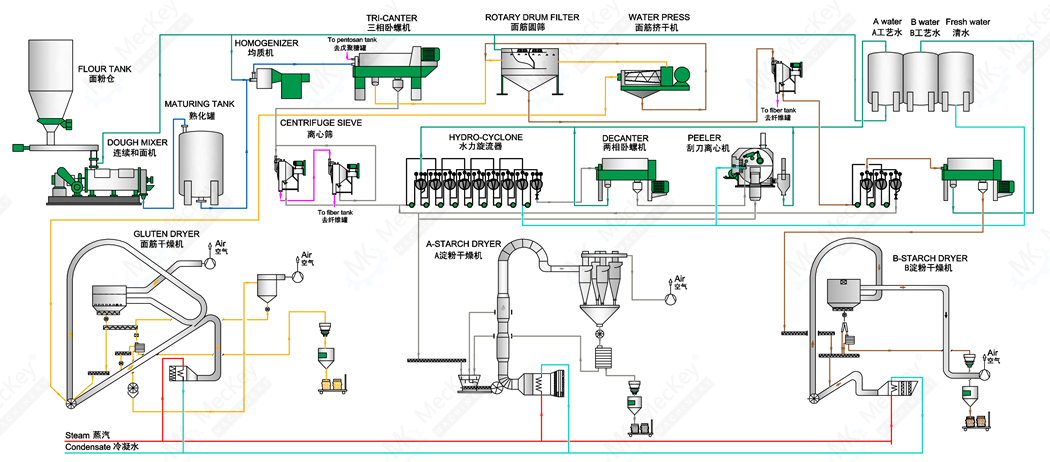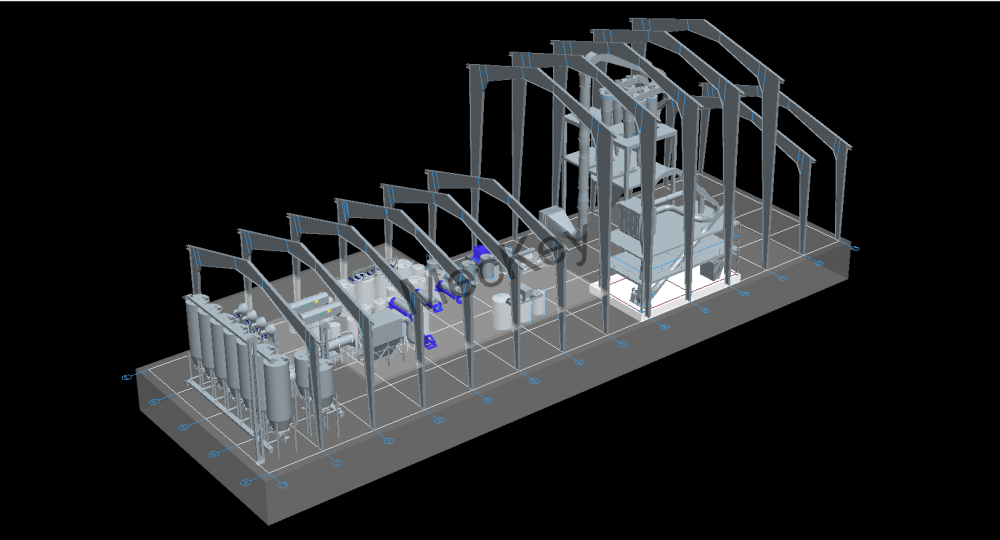Wheat Starch
Last update 2022-05-27
Wheat Starch Production Technology
1.Continuous Martin process

(1) Dough making: Flour is mixed with appropriate proportion water in mixer to form dough. After staying for set time in dough tank, dough enters into watering rotary drum.
(2) Dough watering: Dough is washed by sufficient water being agitated by the blade in rotary drum; the purpose of this step is to wash out starch inner dough.
(3) Gluten screening: The mixture from last step enters to flat screen. Gluten and starch are separated here.
(4)Gluten drying: Gluten on the screen is washed, dewatered, dried and finally crushed to form one of final product gluten powder.
(5)The separation of A-starch and B-starch
After the mixture below the flat screen enters Centrifuge Conical Sieve to remove fiber, they enter into nozzle separator to separate A-starch milk and B-starch milk.
(6) A-starch refining: A-starch milk is further concentrated in cyclone, dewatered and dried to form one of final product A-starch.
(7) B-starch refining: B-starch milk is concentrated separately through nozzle separator and decanter, and dried in gas dryer to form one of final product B-starch.
(8) Fiber handling: Fiber coming from Centrifuge Conical Sieve is concentrated, dewatered and dried to form one of final product animal food.
2. Tri-canter process

(1) Flour Conveying and Dough Preparation:From the bottom of the storage silos, the flour is extracted by vibrating extractor and dosing by rotary valve. Flour is fed into sifter for separating out the residues in the flour before the flour is brought into belt balance. After balance, the flour is mixed with appropriate proportion water by dough mixer. After mixing, the thickness of the slurry should be 12-15Be0 that is suitable for homogenizing in homogenizer. Then, the slurry is sent into tri-canter.
(2) Separating of Gluten& B-starch, A-starch and Pentosan: Tri-phase decanter divides the flour slurry into three portions according to the mixture’s specific gravity difference. Most of the fiber and A-starch is carried to the rotary screen. The
starch contains A/B-starch and gluten are fed to 2 stages rotary screen. The light substance such as pentosan is carried to storage tank.
Left matter on the rotary screen (pure gluten) is re-circulated to 2stages rotary screen for increase the
yield in gluten.
(3) Concentrating and drying of A-starch: The A-starch milk entering the 2 stages fiber centrifugal sieve is divided by two parts: A-starch milk and the left matter that contains much fiber. The wet fiber can be transferred directly to storage tank of
pentosan.
A-Starch milk is transferred to the decanter through starch pump. The function of decanter is washing and refining starch. Pure A-starch will be sent to second decanter for concentration. Finally, A-starch is sending to peeler centrifuge
and dryer to get final product.
(4) Refining of B-starch: after 2 stages rotary screen, the A/B-Starch milk is transferred to the decanter through starch pump. The function of decanter is separating A-starch & B-starch, and washing B-starch. Then the B-starch milk enter the centrifugal
sieve and be divided by two parts: B-starch milk and the fiber.
Pure B-starch will be sent to second decanter for concentration. Finally, B-starch is sending to B-starch dryer to get final product.
(5) Water system:In this system, all fresh water and process water are sent to different places for cleaning, blending use, waste water treatment plant, etc. The suitable chemical should be applied in this section to get good result. Also the safety water tank should be available in this section for machine use.
(6) Gluten drying: Wet gluten is sent to a gluten press for removing the moisture as much as possible. In the ring flow dryer, the vital gluten with moisture less than 9% is finally produced.
Project 3D design
